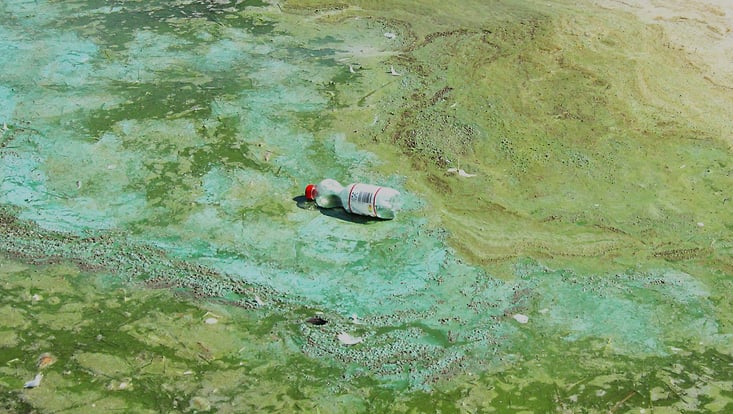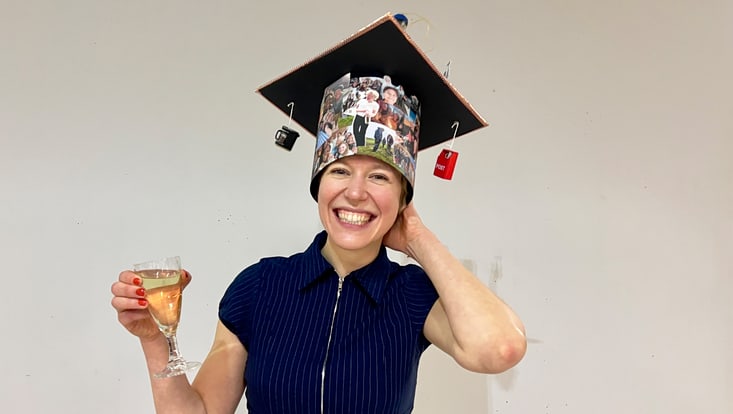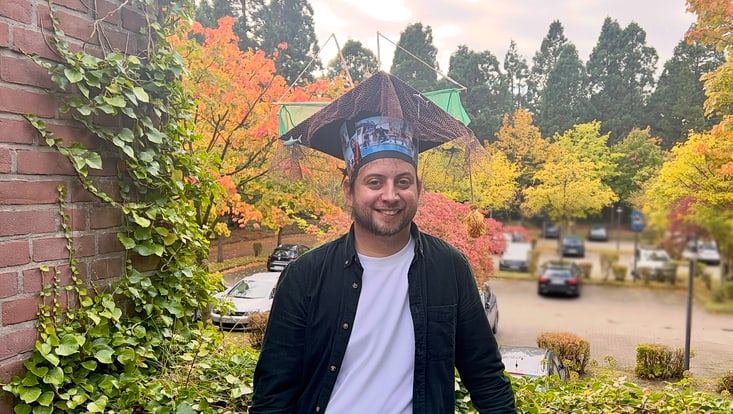'There is something that should not be put together'Third picture of the 'Hall of Fame'
15 January 2025, by RTG 2530

Photo: UHH/RTG2530/Putri
The Research Training Group 2530's photo competition is held once a year. In this third round, doctoral students of the RTG 2530 once again expressed their research in an impressively creative and original way. This time, Alberta Widhi A. Putri's photograph was the winner. It will be exhibited in the 'Hall of Fame' on the ground floor of the Institute of Plant Sciences and Microbiology, in front of room E.084.
The photograph, taken in a pioneer zone of the salt marshes on the Elbe estuary, shows a plastic bottle in the middle of a calm environment of gently undulating shades of green, turquoise and brown. The bottle, tipped over and centrally positioned, appears lost and carelessly abandoned in the surrounding space – a composition that evokes a sense of unease. This unsettling effect is precisely what the photographer seeks to achieve, drawing attention to the disruption of nature, partly caused by human activity.
"Often, we (as humans) neglect what kind of impact may be produced by our activities (anthropogenic activities). The several stressors from anthropogenic activities that might contribute serious impacts on the water quality, how the biodiversity, community compositions, and food web in the aquatic ecosystem may change by the presence of high nutrient loads and due to a single plastic," explains the marine microbiologist and ecologist.
She is fascinated by aquatic ecosystems because, as she poetically describes, they contain a 'hidden garden' that can sometimes appear 'slimy-mud' to the naked eye. According to Alberta Widhi A. Putri, the beauty is only revealed under the microscope, where microbial organisms, the so-called microphytobenthos, become visible. These perform important functions in the aquatic ecosystem and contribute to the stability of habitats. Their role in environments such as the Elbe estuary, where salinity and temperature fluctuate greatly, still needs to be researched further, says the doctoral student. She has called her photograph 'There is something that should not be put together' and would like to appeal to people to treat this sensitive ecosystem more carefully.


